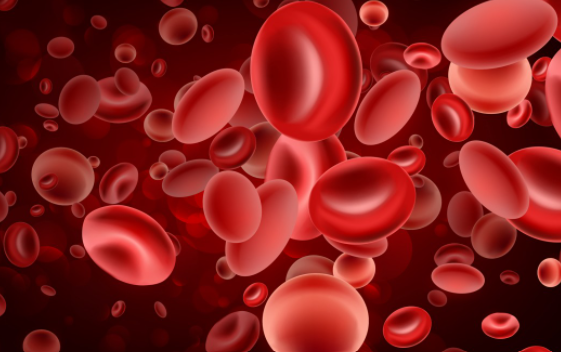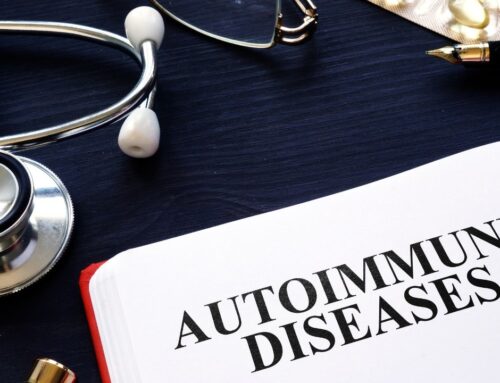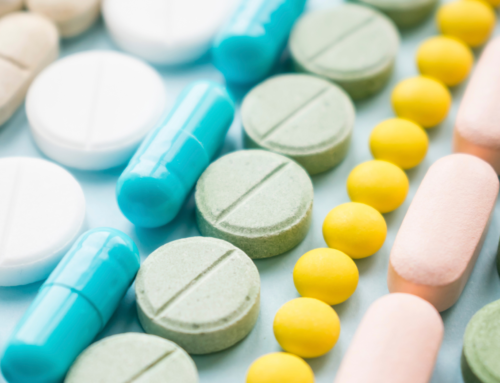The Penetrating Vessel (Chong Mai), like the Directing (Ren Mai) and Governing (Du Mai) Vessels, also originates from the space between the Kidneys, but takes a different path. This Vessel connects the Pre-Heaven (Kidney) and Post- Heaven Qi(Stomach), which allows Essence to travel within the body. The Chong Mai is also known as the “Sea of Blood” “Sea of 12 Vessels” and “the sea of Five Yin and Six Yang Organs” because of its influences.
The Path of the Chong Mai Vessel
The path of the Chong Mai Vessel starts with the ST-30 Qichong, travels with the Kidney channel to the abdomen, into the chest, and to the throat and eyes. Once it rises, the Essence falls down the leg to the internal malleolus(the medial side of the ankle) and the Connecting Channels to warm the muscles between the toes. Both the Directing Vessel and the Chong Mai Vessel start at the uterus, take their path and reunite at the throat. The path allows the Chong Mai to give energy to relevant points, the Linking Vessels and the Stepping Vessels.
There are 5 branches to the Chong Mai Vessel:
First, there is the Internal Branch, in which the vessel flows from between the kidneys and into the uterus in women and the prostate for men. Therefore, the Vessel is responsible for 7 and 8 year cycles for women and men as well as the transformation of Kidney Essence to menstrual blood and sperm.
The Abdominal Branch starts at the ST-30 Qichong, through the Kidney points until the KI-21 Youmen and spreads across the chest. Rebellious Qi attacks this branch, which creates symptoms in the chest, breasts and face. This branch breaches the membranes of the abdomen, so in pathology, the stomach feels tight, tense and possible pain.
Third, there is the Head Branch, where the vessel reaches the throat, chin and eyes. There is a small blood quantity that travels to the chin in women because of menstruation, so they have more Qi on their face. Blood promotes hair growth, so women do not grow beards until menopause. Facial hair on women, could be due to polycystic ovary syndrome, amenorrhea and/or oligomenorrhea in the head branch.
Fourth, there is the Spinal Branch where the vessel ascends Qi inside the lumbar spine from Ren-1 Huiyin. This is the reason behind back pain in menstruation.
Lastly, there is the Descending Branch, where Chong Mai falls from ST-30 Qichong to the leg down to the big toe in order to warm the muscles. This vessel can be used in Yin deficiency of the leg, including restless leg syndrome. Through the descending branch, the Du Mai and the Ren Mai are influenced with the connecting point SP-6 Sanyinjiao. The ending of the vessel is LIV-3 Taichong, which moves blood into the Uterus and is used in gynaecological pathology. Pathology can be reflected as cold feet or fungal infections in the big toe.
Sea of Blood

The Chong Mai is referred to as the “Sea of Blood” because of its influences in the Uterus and the Blood Channels. The upper point is BL-11 Dashu and the lower points are ST-37 Shangjuxu and ST-39 Xiajuxu. Pathology in the Sea of Blood includes; Blood Deficiency, Blood Heat, Blood stasis and gynaecological problems. In gynecology, the points SP-4 Gongsun and P-6 Neiguan are paired with KI-14 Siman and LIV-3 Taichong to revitalize blood. The muscle pains occur through menstruation because of the connection of the uterus with the Blood Channels within the body.
The body of a woman is more exposed to external pathogens during menstruation because the space between the skin and muscles are depleted of blood. In abundance blood moistens the skin, grows hair, and warms muscles. The Heart and the Chong Mai are connected since it spreads within the chest and the Heart governs blood. This vessel can be used for anxiety and palpitations in menopause, and heart rhythm.
Sea of the 12 channels
The Chong Mai has influence over secondary channels and channels all over the body, excluding the arms, but including the Connecting channels. The Qi is powerfully circulated through the Chong Mai that originates from a central point in the abdomen.
Sea of the Yin and Yang Organs
The Chong Mai is in the center of the energetic vortex; it is made by the Du Mai, Ren Mai, and the Chong Mai. It is strongly related to the Liver because of its path down the legs and its connection to the abdomen. The vessel also contains the Kidneys, Stomach/ Spleen, Heart because of the connection between Essence, Qi, and Mind.
Rebellious Qi
Rebellious Qi is a pathological response in the Chong Mai Vessel where Qi becomes unregulated. Either emotional stress suppressed, or Blood/ Kidney deficiency in the vessel in the lower abdomen. It manifests as internal urgency with symptoms such as;
- The feeling of heat in the face is due to imbalance and causes the feet to be cold since the Qi refuses to descend.
- fullness/ distention/ pain in the lower abdomen/umbilical area/ epigastrium
- painful/irregular periods
- Tightness below the xiphoid process/ chest/ Palpitations
- Slight breathlessness/ sighing
- Lumps in the throat
- Headaches/ dizziness
- One can use Du-20 Bahui, BL 11 Dashu, ST-37 Shangjuxu, ST-39 Xiajuxu.
- these points can treat nausea including an additional point ST-30 Qichong.
- One can use Du-20 Bahui, BL 11 Dashu, ST-37 Shangjuxu, ST-39 Xiajuxu.
- Anxiety or mental restlessness
Gynecology
In the case of Blood Deficiency, women can suffer from scanty periods. Blood heat will cause periods to have a heavy flow. In Blood stasis, periods will be more painful and blood clots will be more eminent. The Chong Mai Vessel revitalizes blood with the points SP-4 and P-6, paired with KI-14 Siman and SP-10 Xuehai.
Female Breast
The female breast contains connecting channels, which are controlled by the Chong Mai. Pathology in Qi Stagnation causes Breast distension, pain, or breast lumps. The membranes are the connective tissue within the body, surrounding the organs, muscle, and bones. The abdomen and chest contain membranes that are influenced by the Penetrating Vessel. The breasts also contain membranes, that are affected by Chong Mai. Because of its connection to the uterus, the Chong Mai is responsible for the production of breast milk after childbirth. It is said that blood transforms into milk because menstruation stops after childbirth. Agalactia is due to the stagnation of Qi that blocks the secretion of Milk. Empty Agalactia is due to Qi deficiency, where not enough blood is transformed into milk.
Heart

The heart is influenced by the Chong Mai Vessel because it disperses into the chest and it controls the blood. The Heart represents fire in the Five Element Theory, whereas the Kidneys represent water. In this connection, fire descends to meet water and water ascends to meet fire. Normally, the fire ascends and the water descends, however, they need to communicate with one another in order to mutually assist each other. This vessel reduces palpitation problems, arrhythmia and anxiety during menopause. The Heart-Qi and Heart-Blood descend to the Uterus in order to dispel the eggs.
Stomach
The Penetrating Vessel starts at the point ST-30 Qichong, which lies within the Stomach, or the Postnatal Qi. The Kidneys or the Pre- natal Qi are the gate from the Stomach, thus connecting the Vessel to the Kidneys. The stomach also connects with the Heart through the Xu Li. the connection of the stomach and the Uterus provides reasoning for morning sickness as rebellious Qi manifests. Ban Xia Rhizoma Pinelliae is used to regulate the Vessel within the formula Wen Jing Tang when the uterus experiences Cold.
Circulation to the feet
The Chong Mai transports Qi to the legs and mainly the feet, so pathology manifests when the feet are cold, numb, and tingling. Points to aid include P-6 Neiguan, KI-11 Henggu, KI-13 Qixue, SP-6 Sanyinjiao and KI-4 Dazhong.
Ancestral Muscles (Zong Jin)
The ancestral muscles refers to the rectus abdominis which lies on the sides of the midline or possibly the penis. The stomach lies near the rectus abdominis. When the Vessel is in pathology, the rectus abdominis slacks off, women risk prolapse in their uterus and men risk atrophy in the legs.
Penis
The root of the penis is located between the inferior fascia and the fascia of Colles. It relates to the pubic bone and the rectus abdominis. The penis relies on the Penetrating Vessel to receive blood for a normal and proper erection. Single points can treat erectile dysfunction, such as P-6 Neiguan along with KI-13 Qixue, KI-11 Henggu and Ren-4 Guanyuan. The penis contains many Connecting Vessels which receive essence from the Penetrating Vessel. Most of the tissues in the penis are part of the Membranes.
Prostate
The prostate in a man is similar to the uterus in a woman. The Governing, Directing and Penetrating Vessels flow through the prostate. The points Ren-4 Guanyuan and Du-4 Mingmen are examples of the Yin and Yang theory; both aid differently to produce seminal fluid. Phlegm, Blood stasis and Dampness occur because of stagnation in the connecting channels of the prostate and cause Prostatic hypertrophy. The symptoms also include Kidney deficiency, thus the treatment would include tonifying the Kidney and revitalizing the blood.
Directing vs. Penetrating Vessel
The Directing Vessel aims to invigorate Qi directly related to Lungs, whereas the Penetrating Vessel aims to invigorate Blood directly related to the Heart and the Spleen. Signs of Qi deficiency include a weak and short pulse, therefore, the Directing Vessel needs to be treated. The signs of Blood Excess include a slippery and long, thus the Penetrating Vessel should be treated. They also target different sections of the abdomen, the center abdomen is aided by the Directing Vessel and the lower abdomen is aided by the Penetrating Vessel. The Directing vessel is used for fertility and pregnancy, whereas the Penetrating Vessel is used for painful menstruations.







I got what you intend,bookmarked, very decent website.
Thank you!!1